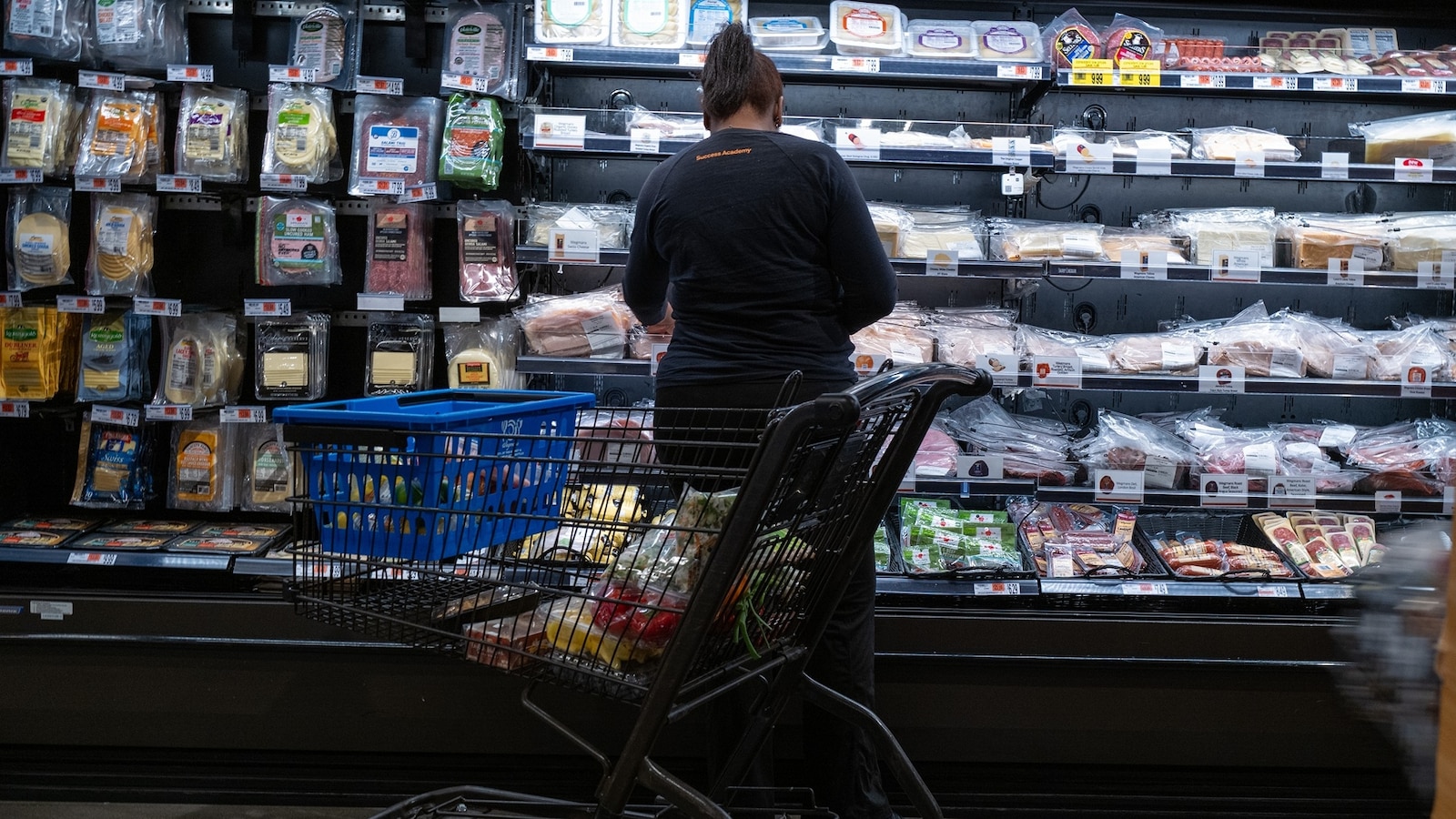Inflation cooled in the aftermath of President Donald Trump’s “Liberation Day” levies last month, dropping to a four-year low and defying fears of tariff-driven price hikes, government data this week showed.
Even egg prices — a symbol of rising costs — fell about 10% in April compared to the previous month.
Still, prices for some products continued to soar, including everyday items such as coffee and beef.
It’s normal for some prices to rise at a much faster pace than overall inflation, said Omar Sharif, founder and president of research firm Inflation Insights. The impact, he added, depends on the role such items play in a given person’s finances.
“At the end of the day, what’s important is the weight of the price change in your budget,” Sharif said, noting stubborn price hikes for some goods may be offset by price drops for others.

People shop at a grocery store in Brooklyn, May 13, 2025, in New York.
Spencer Platt/Getty Images
Here’s what to know about which prices are still climbing and what’s behind the trend:
Coffee
Coffee prices soared 9.6% in April compared to a year ago, marking inflation four times higher than the overall rate. Instant coffee prices climbed even faster, jumping 13.5% over the past year.
The spike in coffee prices comes down to a dearth of supply alongside robust demand, meaning too many dollars are chasing after too few coffee beans, David Ortega, a food economist at Michigan State University, told ABC News.
Recent droughts in Vietnam and Brazil — two of the world’s largest coffee producers — have restricted global output, Ortega said.
“These price increases are primarily driven by weather shocks,” Ortega added.
Meanwhile, coffee drinkers avail themselves of few alternatives, resulting in consistent demand for the product.
Beef
A spike in beef prices also stems from a supply shortage that traces back to drought conditions, Ortega said.
Ground beef prices soared 10% in April compared to a year ago, while the costs of beef steaks increased 7% over that period, government data showed.
In 2022, a major drought in the beef-producing regions of the U.S. forced cattle herders to sell off more animals than usual, since the drought raised costs for cattle feed, which in turn made it more expensive for ranchers to maintain their herds, Ortega said.
Many of those ranchers, he added, sold off cattle necessary to produce future beef supply.
“The national beef herd is at its lowest level in decades – and demand is strong,” Ortega said. “When those two things meet each other, you get this big rise in prices.”

In this March 7, 2025, file photo, a Take 5 Oil Change shop is shown
UIG via Getty Images, FILE
Car repairs
Car repair prices soared 7.6% in April compared to a year earlier, amounting to inflation three times higher than the overall rate.
The trend owes in large part to the rise of high-tech cars, equipped with features like rearview cameras and traffic sensors, which have added cost to even some routine repairs, Brian Moody, executive editor at Autotrader, told ABC News.
A shortage of workers has exacerbated the cost woes for repair companies as they bolster compensation to attract and retain employees, sending prices higher, Moody added.
“More people want technology in their cars,” Moody said. “That technology requires greater skill to manage and fix, but at the same time, there’s a shortage of technicians and workers.”
Men’s and women’s outerwear
Overall apparel prices dropped slightly over the year ending in April, but some items may still deliver sticker shock for spring shoppers.
Prices for men’s outerwear, including suits and sports coats, climbed 5.3% over the year ending in April, which amounts to inflation more than double the overall rate.
Women’s outerwear costs — which include jackets, coats and vests — surged even faster, climbing 6.2%.
Sharif, of Inflation Insights, said the reason for these price increases is murky since they have coincided with a much slower rise in costs for producers of men’s outerwear and an outright drop in production costs for women’s outerwear.
The ample supply of such products means the price hikes likely result from quirks in consumer taste, potentially resulting from the prices commanded by specialty brands, Sharif added.
“Shifting trends in demand may be pushing prices higher,” Sharif said.

